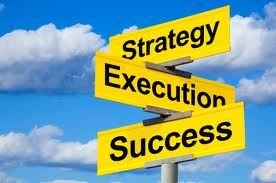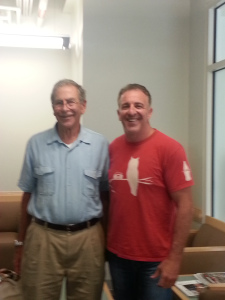Life of a Daymaker
 I am writing this on my way back from the EO learning conference in Buenos Aries, Argentina, where I participated with all my colleagues and friends to see a great conference come together. I want to focus on two speakers that were really inspirational and knocked it out of the park. The first was Rick Kash of The Cambridge Group, whom I’ve written about before, but seeing him in person was super special and why I am proud that I invited him to speak to us. The other was David Wagner, whose story was extraordinarily inspiring.
I am writing this on my way back from the EO learning conference in Buenos Aries, Argentina, where I participated with all my colleagues and friends to see a great conference come together. I want to focus on two speakers that were really inspirational and knocked it out of the park. The first was Rick Kash of The Cambridge Group, whom I’ve written about before, but seeing him in person was super special and why I am proud that I invited him to speak to us. The other was David Wagner, whose story was extraordinarily inspiring.
David’s book, Life As a Daymaker, was born as he was running his beauty salons and creating an exceptional experience for people as they came into his specially-designed salons, and even now are treated to having their day made, in one way or another. David tells his story of how he saw the difference of changing people with the new looks, pampering, and the personal treatment and care he gave to each person.
This became especially clear to David in two main examples he gave. First was a young lady who came in because she was getting married and wanted a new look for the wedding. David gave her the new look she desired, and helped her to find her confidence, as well. Later, when he found out the wedding was called off and that she’d kicked him out, he was astounded that he had helped her walk away from a mentally and physically abusive relationship.
On another occasion, a regular customer came in weeks early for a visit and said she just wanted to look good and feel better about herself. He just felt like she needed some additional attention, so he gave it his best to make that 30 minutes as special as possible. David got a note from her a while later thanking him for making her feel so special – that the reason she was coming in was because she wanted to look beautiful as she ended her life that evening. She explained that in their time together, she had decided not to go through with it. What a difference that 30 minutes had made!
David went on to tell other examples of how to make someone’s day and to do it for little or nothing in cost. He spoke of buying a present for his wife, Charlie. Struggling to find the right gift, he bought a picture frame for $1.99 with two kids on the beach and wrote a poem using the letters of his wife’s name to start each line. He also encouraged us to look to his book to pull out other examples.
David closed the presentation by sharing with us his mission of helping cancer patients and their families cope with their illnesses. His salons have opened their doors to 4,000 people going through chemotherapy. By coming in with their families, he offers a special experience of letting them participate, not only in the haircut, but also in the private photo-shoot that is held in the guest’s honor. He then turned inward and began to share of his recent experience of being diagnosed with bone cancer in his hip. He invited his wife, Charlie, and their two young daughters to the salon to partake in shaving his head, which he explained made the experience easier on the family. He showed pictures of his struggle and his healing, spoke of how going through this had changed his life, and how he had beat cancer and is now in remission.
David’s amazing story was greeted with a standing ovation. We all left that night knowing we have the power to affect those around us by being a Daymaker with every action.








